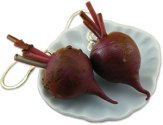Polymer lemonade!


Kentucky’s Ron Lehocky happily received a bin full of other artists’ scrap clay recently. He’s begun turning those discarded canes, experiments and leftovers – our “lemons” into “lemonade” for the KIDS project.
Take a look at what Ron can do with failures and leftovers! In some of the photographs he’s inserted the original cane to illustrate the transformation.

Ron first separated the donated clay into two piles -definitely scrap and scrap with potential for reworking. All will end up as part of the project, either on the surface or inside the heart pins. Transforming canes is an enjoyable challenge for Ron as he cranks out heart number 15,945!
At $10 each, it’s easy to calculate how much he’s raised for the childrens’ center. Ron wants to pass along a big thank you. Read previous posts about the project here and contact Ron here. He would love feedback from anyone who recognizes their scrap.
















